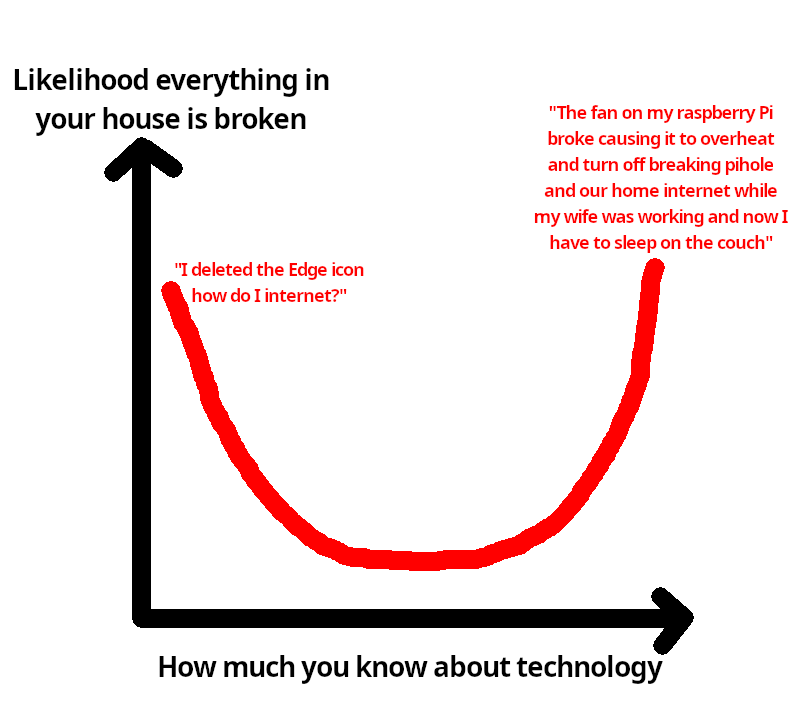this post was submitted on 12 Jul 2024
872 points (97.9% liked)
me_irl
4665 readers
485 users here now
All posts need to have the same title: me_irl it is allowed to use an emoji instead of the underscore _
founded 1 year ago
MODERATORS
you are viewing a single comment's thread
view the rest of the comments
view the rest of the comments

Nice! That seems like a sweet little server. Direct play is for sure ideal, plus if 720p is good enough quality for you I'm sure it saves a bunch on disk space.
My set up is an A380 passed to an Ubuntu 24.04 VM on a TrueNAS CORE host. It was really simple to set up PCIe pass through, TrueNAS let's you do everything you need though the web GUI and h.264 and HEVC transcoding worked right out of the box in Jellyfin with the Jellyfin flavored FFMPEG if I recall. It also supports AV1 encoding but I haven't tried that out. It handles like a dozen 4k transcodes at once, they're capable little cards. I think ASRock makes a slot powered low profile 1 slot version.
I'm familiar with the sparkle arc cards, not so much asrock. I'll check it out.
My main motivation for 720p is a combination of me not caring about 1080/4k, space, and bandwidth. I only really get 10mbps of upload where I am. It's basically impossible to get anything faster, so if one person tries to stream 4k, not only are they going to have a bad time, but also, nobody else is going to be watching anything.
If I had 4k/1080 content, most of the time the server would need to transcode it anyways for most people, which I'd have to pay for via my electricity bill, and I'd be footing the bill for more disk storage to keep it around. On top of that, live transcoding is generally not as good as a 2 pass vbr when running it through handbrake or something.
There's obviously more to it overall, but I'll leave it at that.
Plex has support for hardware transcoding, but the CPU in the server where my VM is, doesn't have a built in GPU, so I have to add one in. It's part of the reason I moved from the c6100 to an FX2s. The "s" variant of the FX2 has PCIe card slots in the back that connect to the hosts. In the case of the c6100, there was space for a PCIe card, but only one, and given the built in 2x1GbE onboard, I'd sooner use those for additional networking. The FX2s has 2x10GbE, so it's less of a concern to use the PCIe slots for graphics... Also, there's two slots per half-width blade, which is what I have, so I could add two GPUs per host.
I also want to experiment with 3D accelerated vdi, and cluster hosted gaming (similar to stadia), in house... For that I need a decent graphics card. The only one with a good amount of RAM is the Intel flex 140 and the Nvidia T4. The arc A380 is decent, but 6G of memory is limiting. The flex 140 has 12G IIRC and the T4 has 16G. It seems like a lot until you split up the GPU among a couple of VMs... On the T4 you get either 2x8G VRAM systems, or 3x 5.33G VRAM systems.... I'd rather 6G per as a minimum standard. This means that to have two GPU enabled systems with the A380, you'd basically need one card per VM. Even though they're pretty cheap cards, having 3 hosts (as is the plan) gets expensive pretty fast.